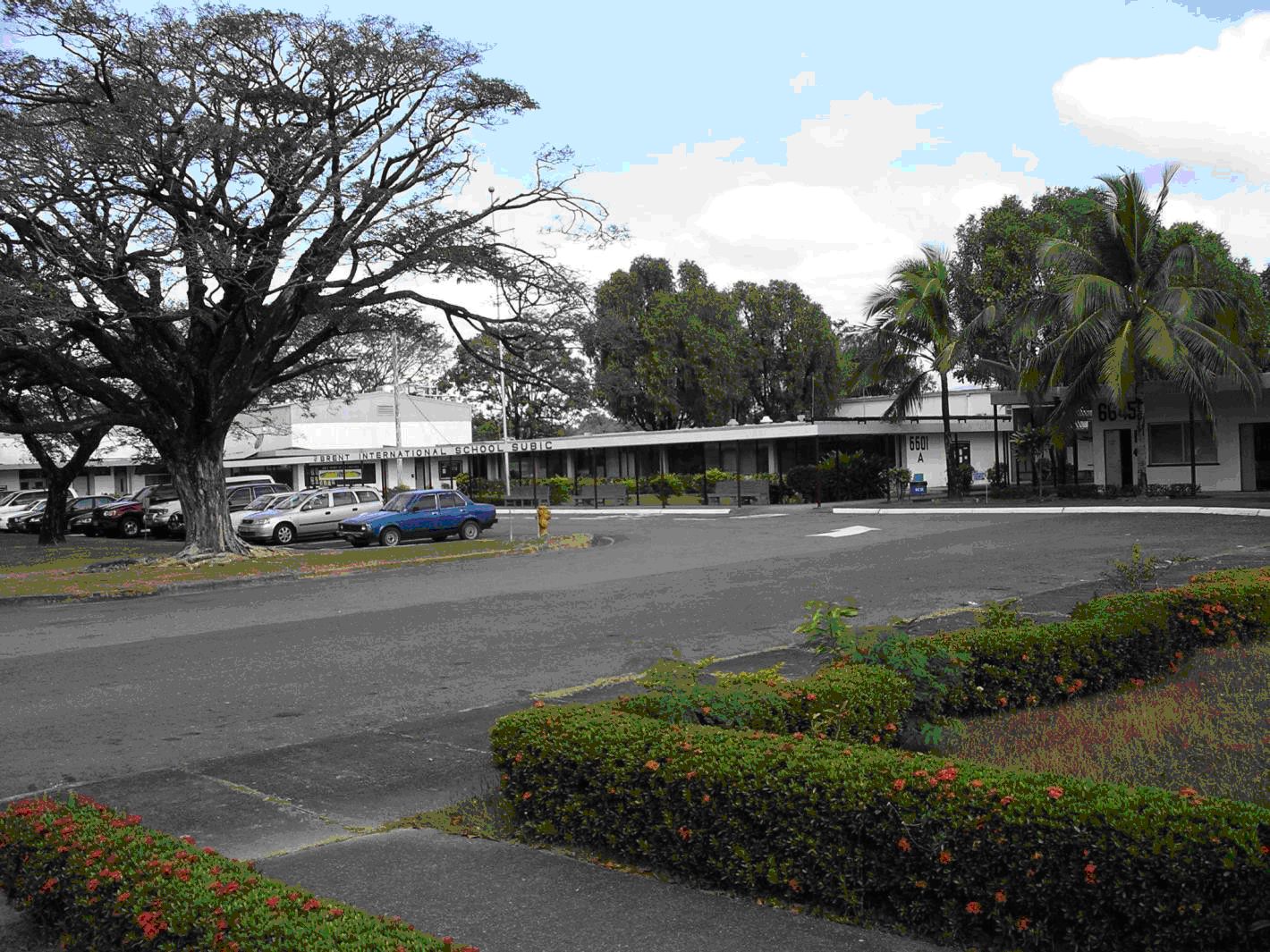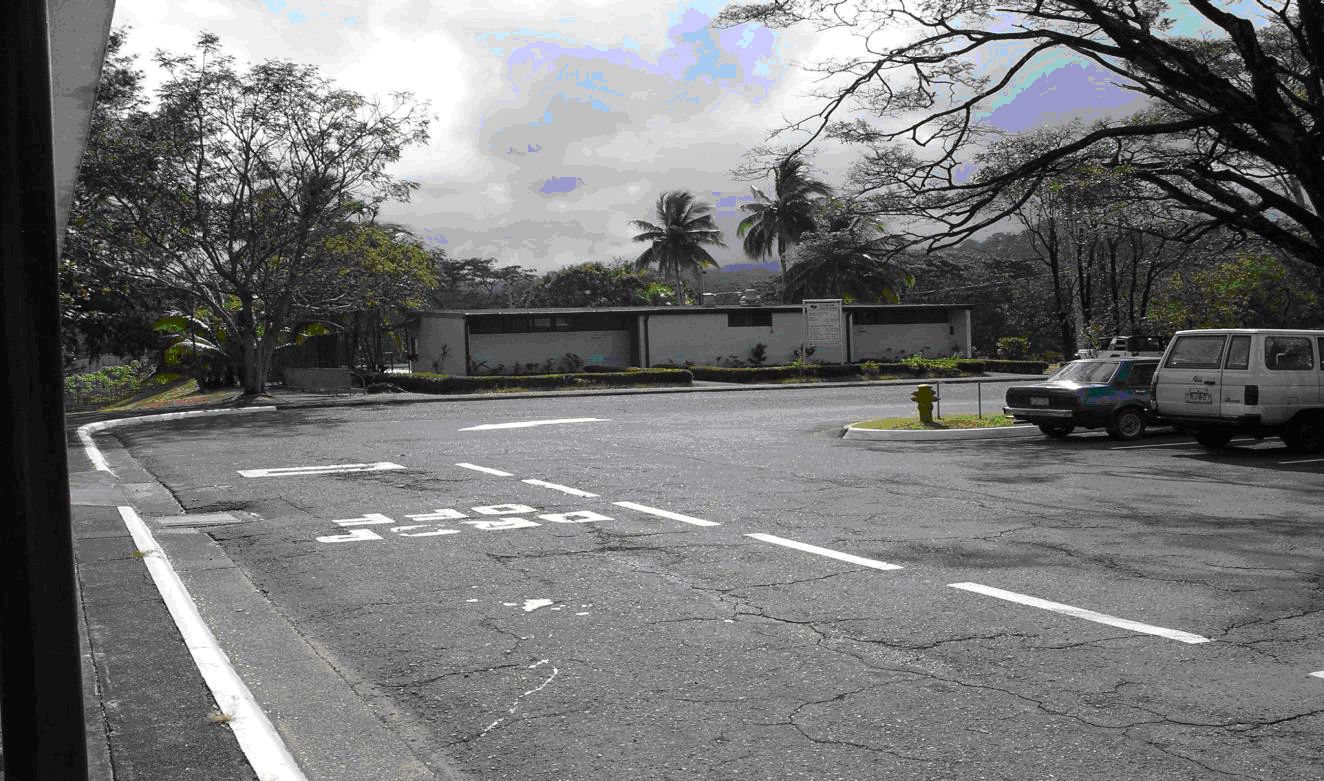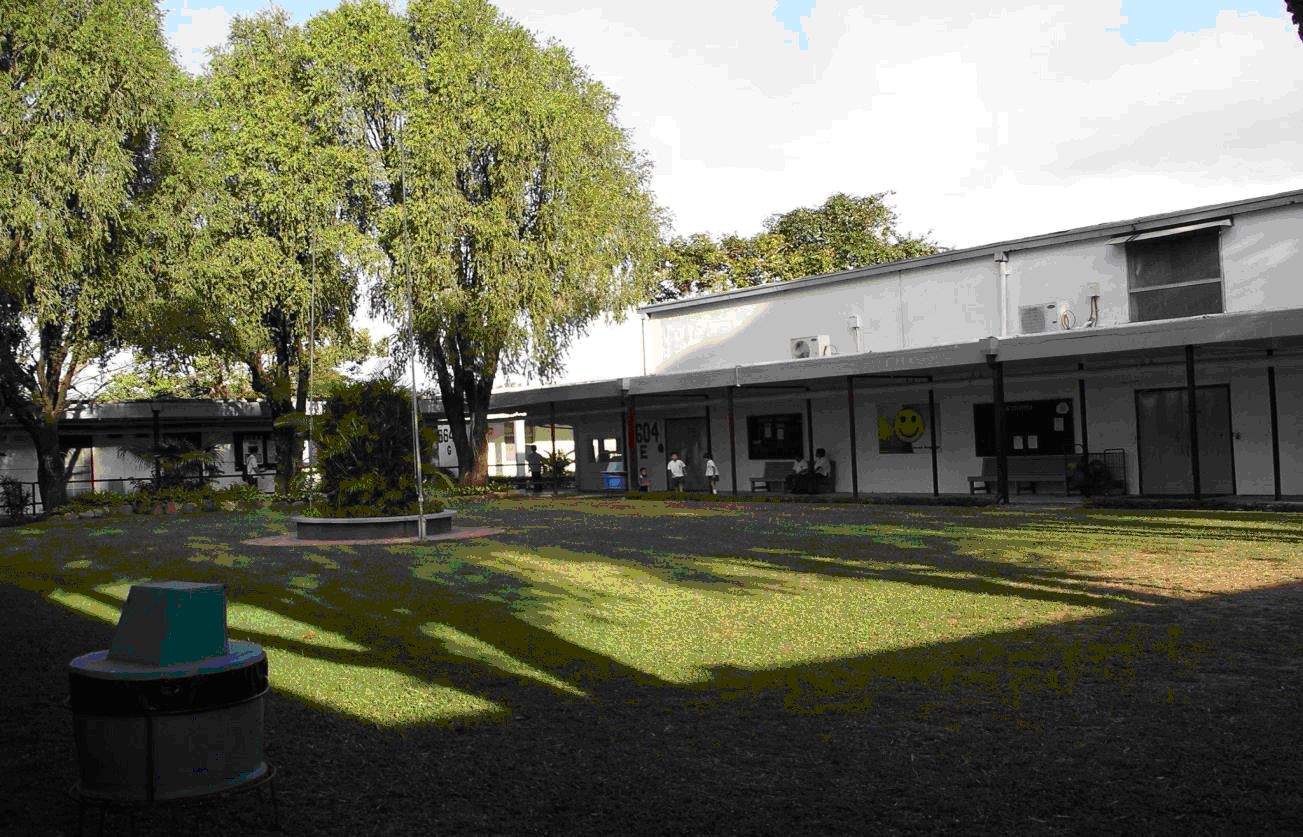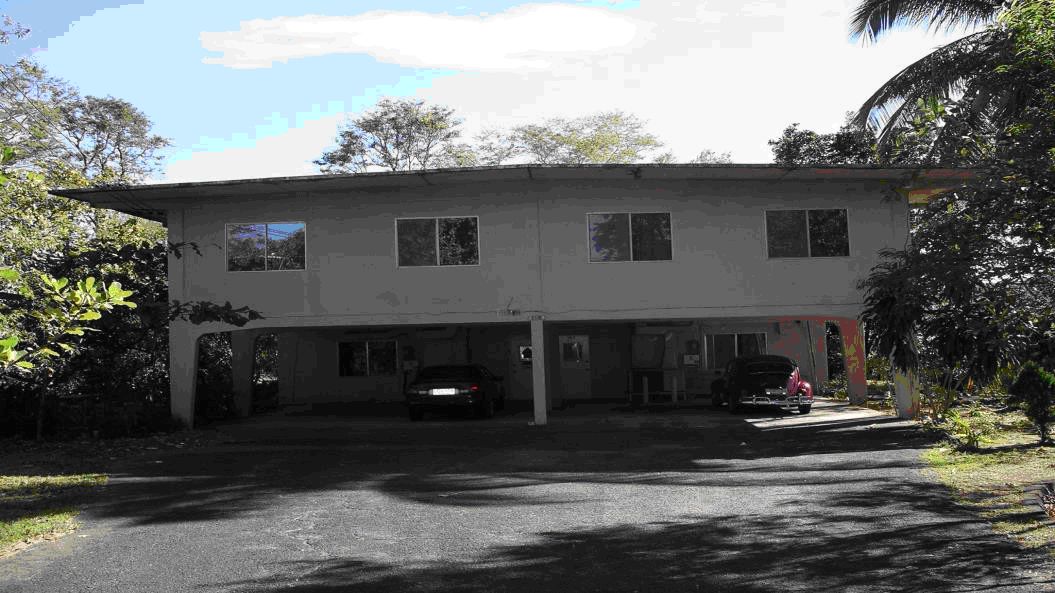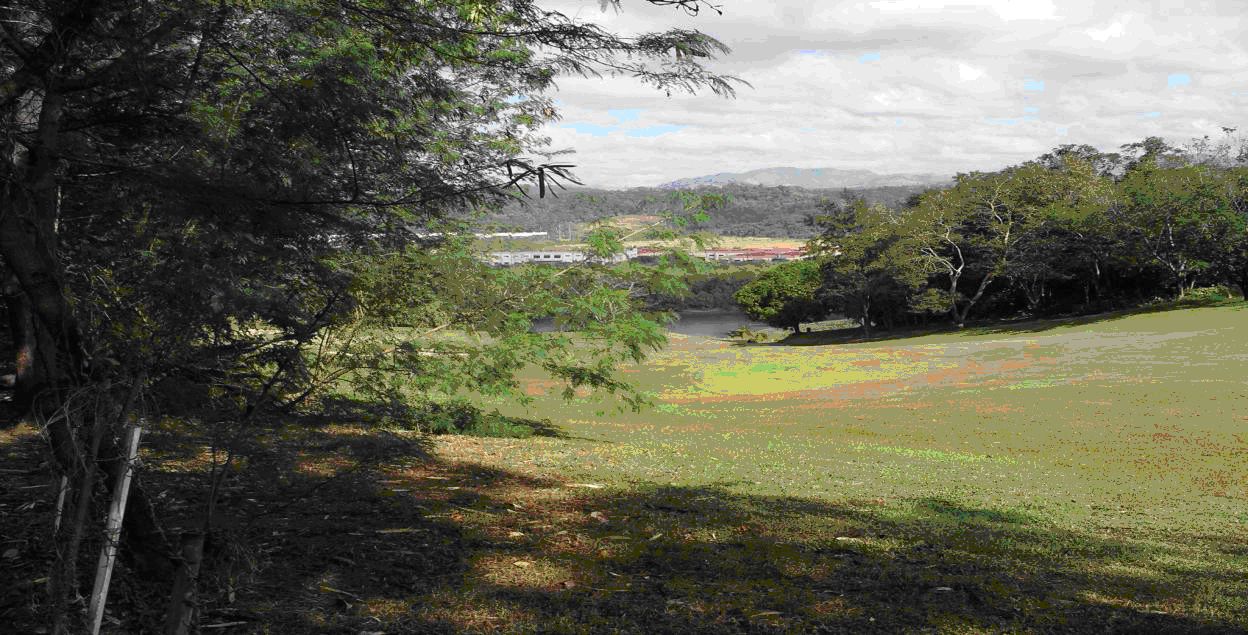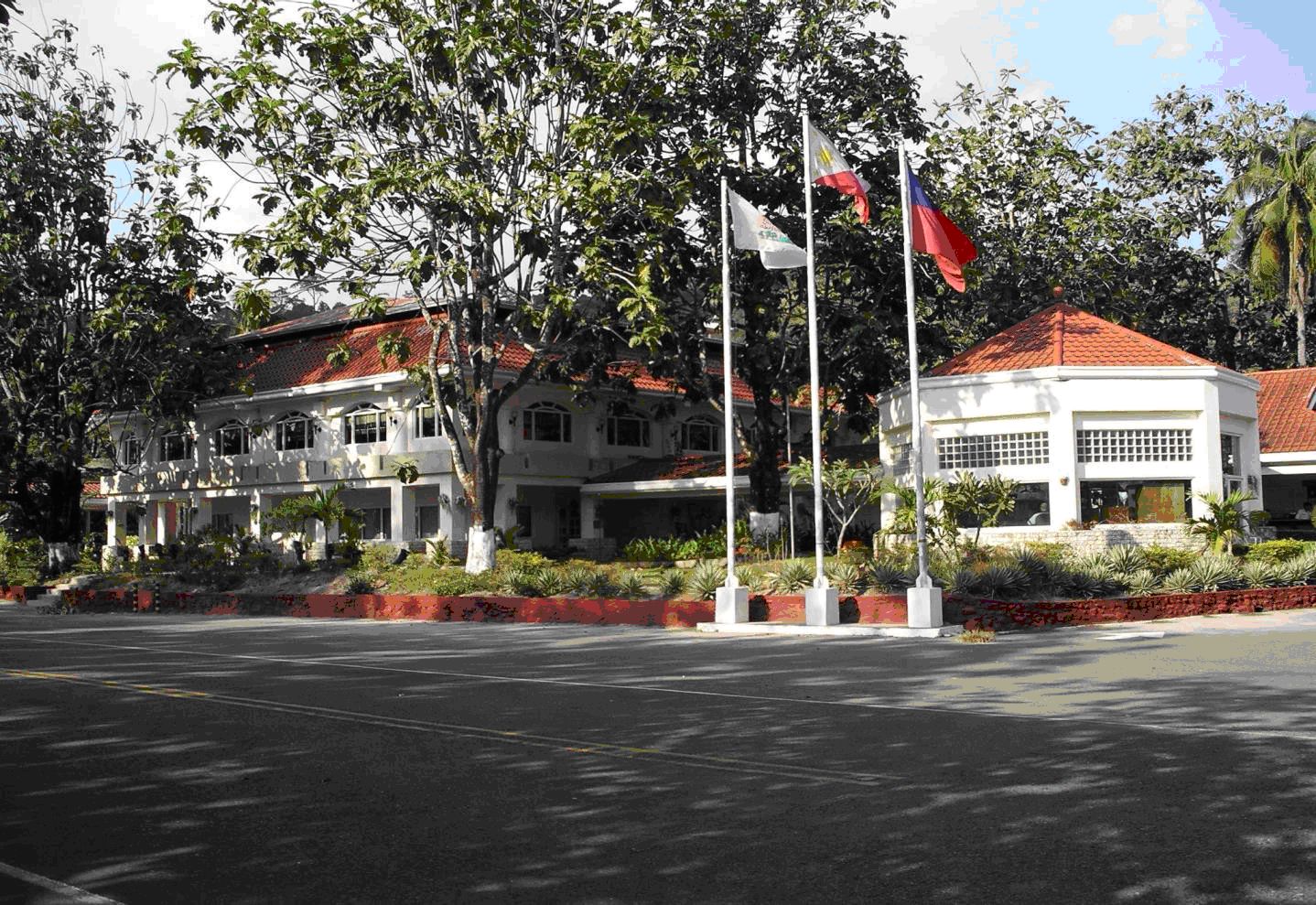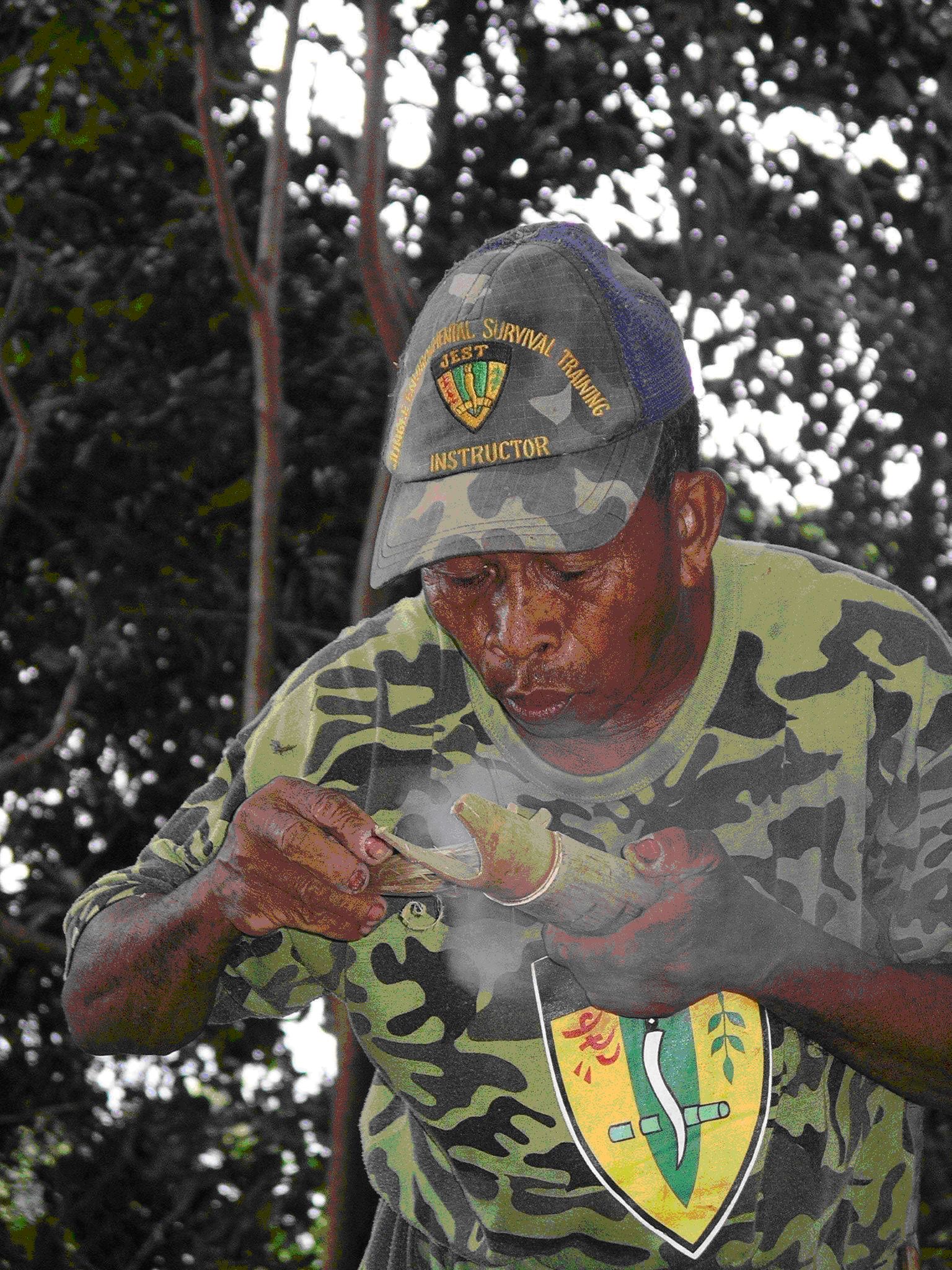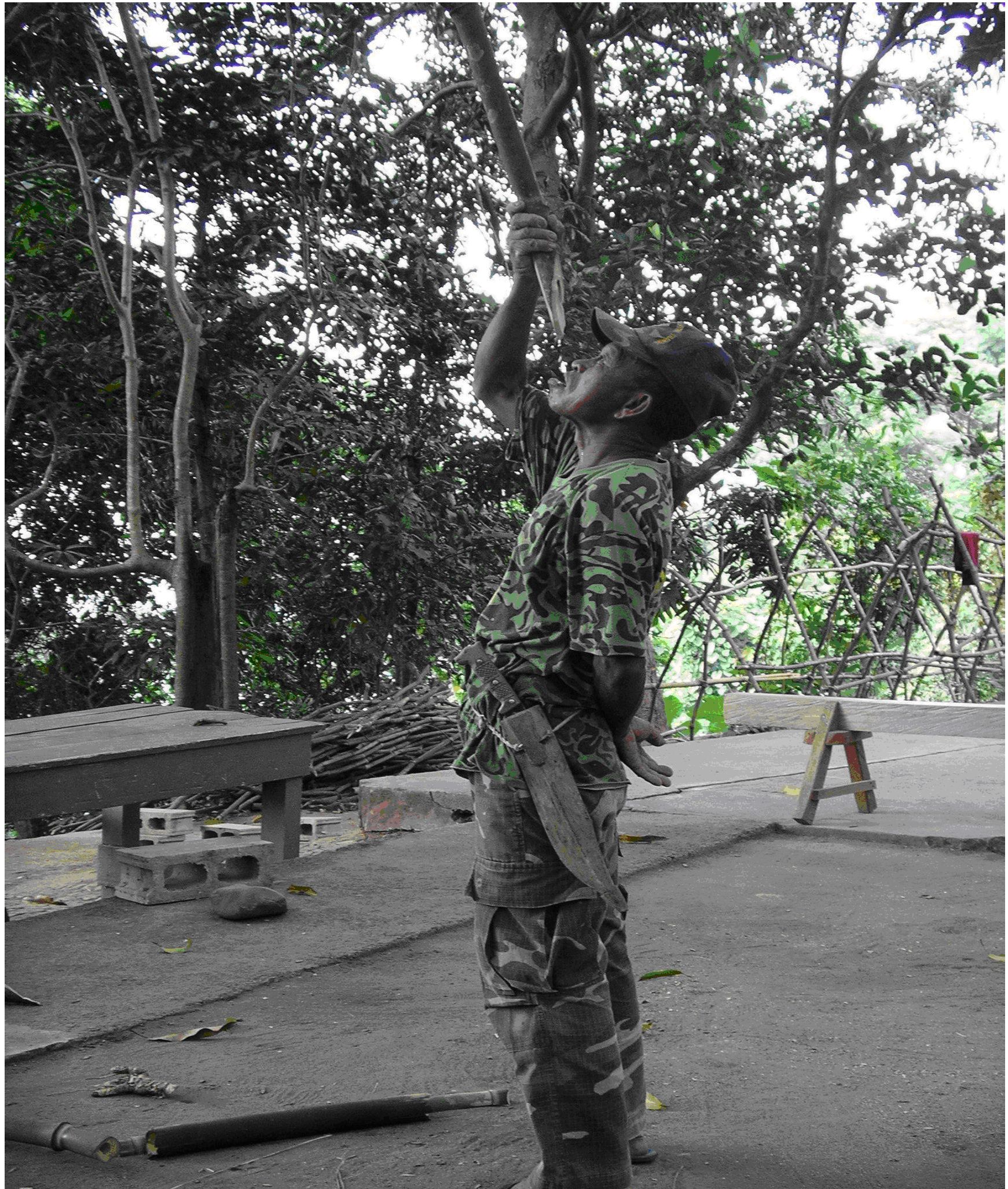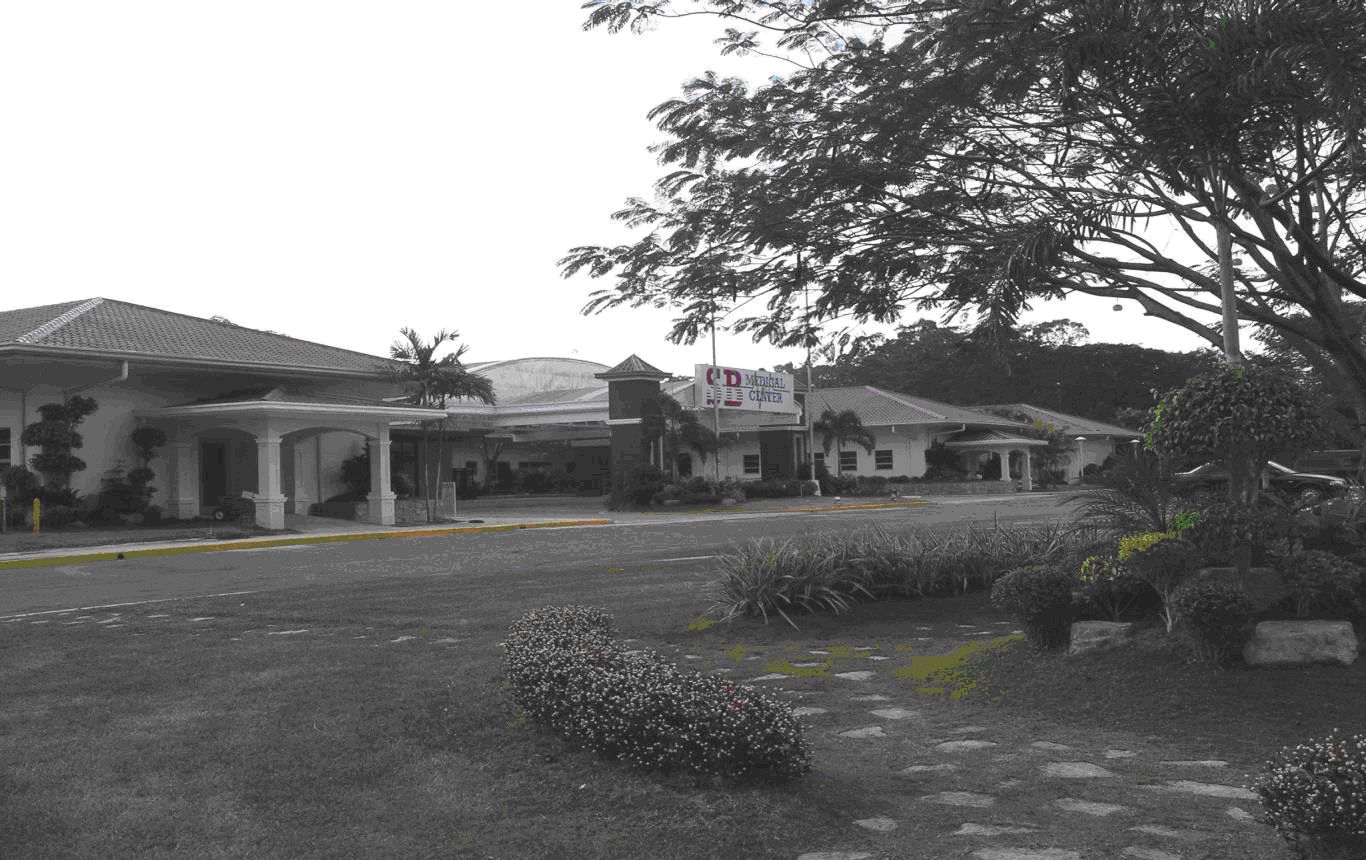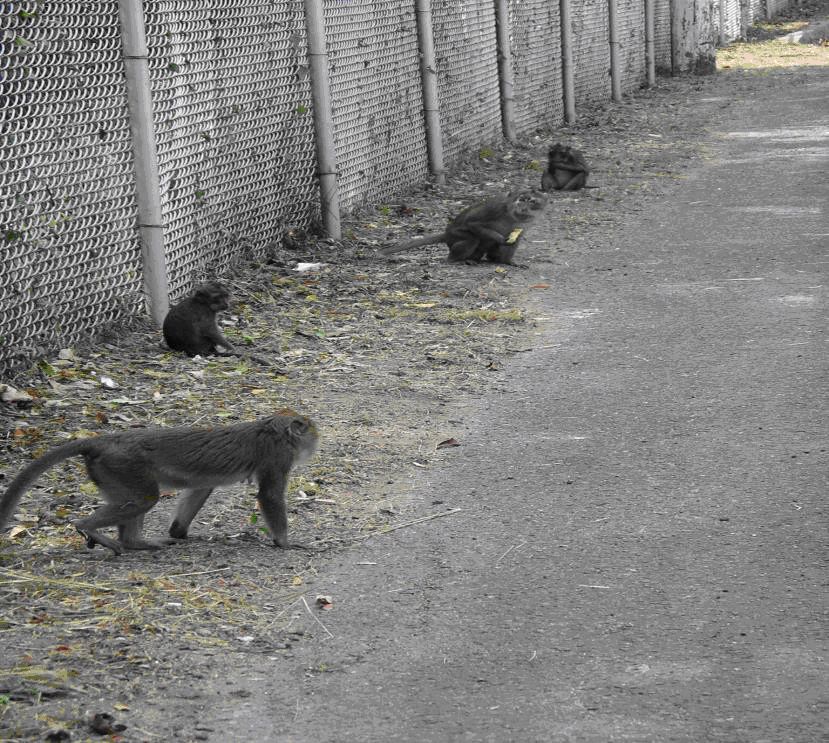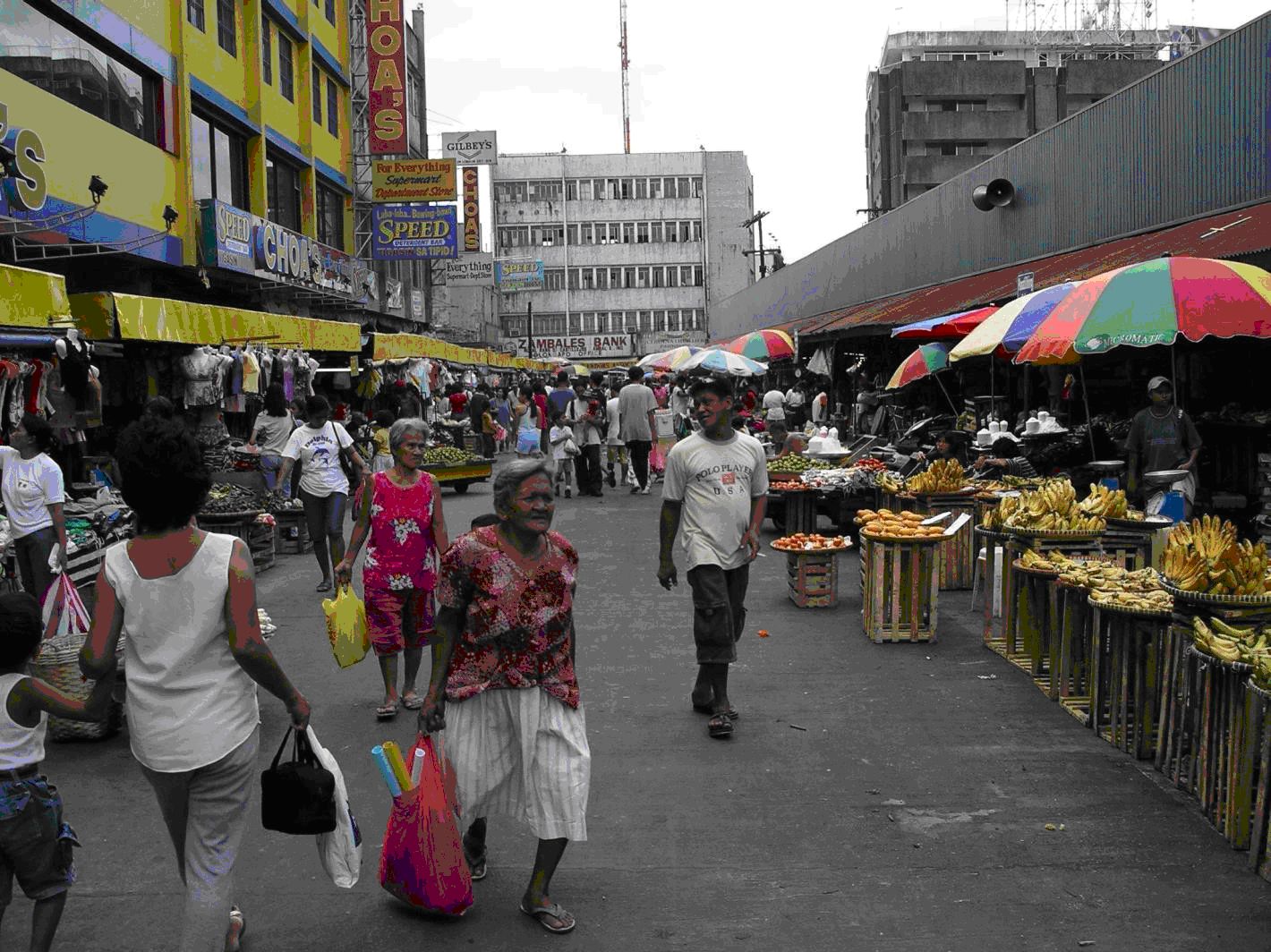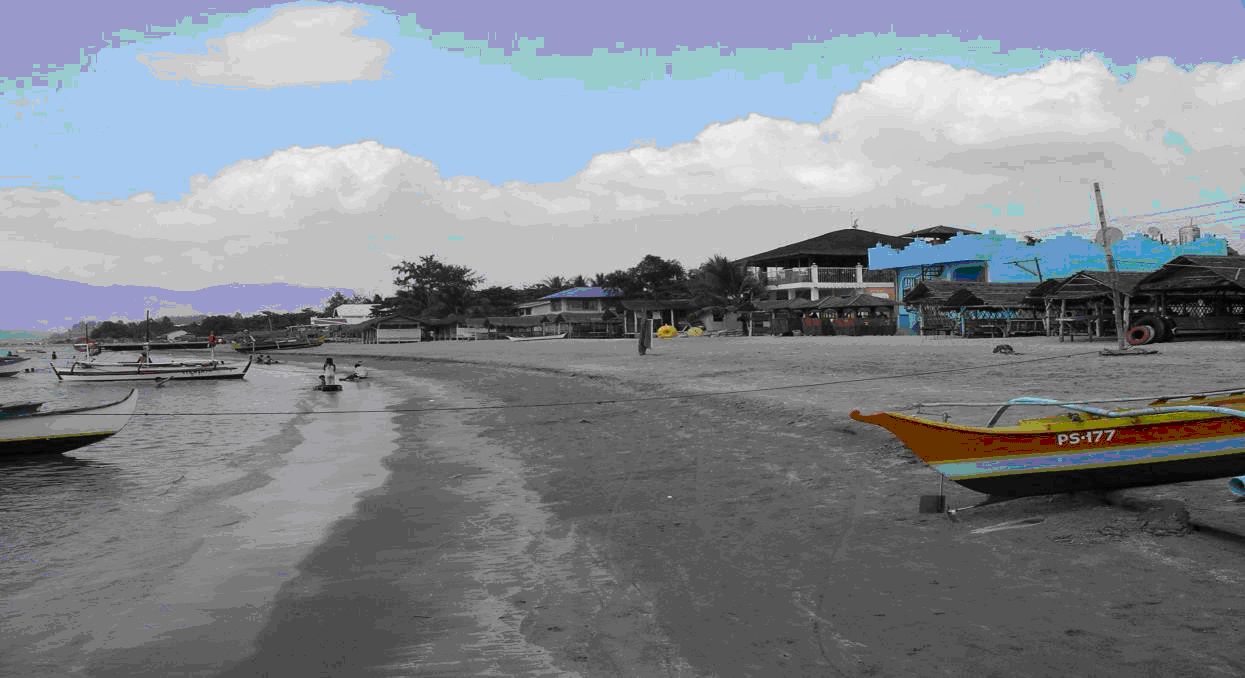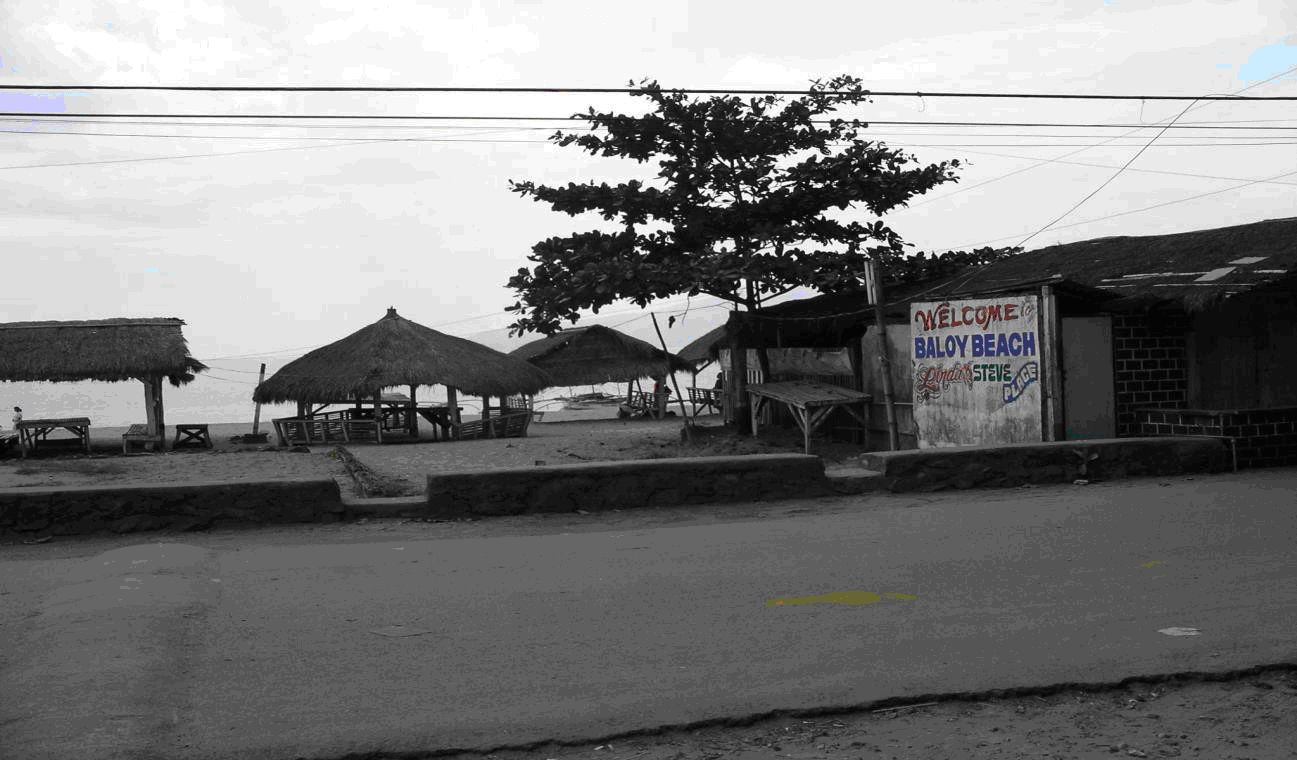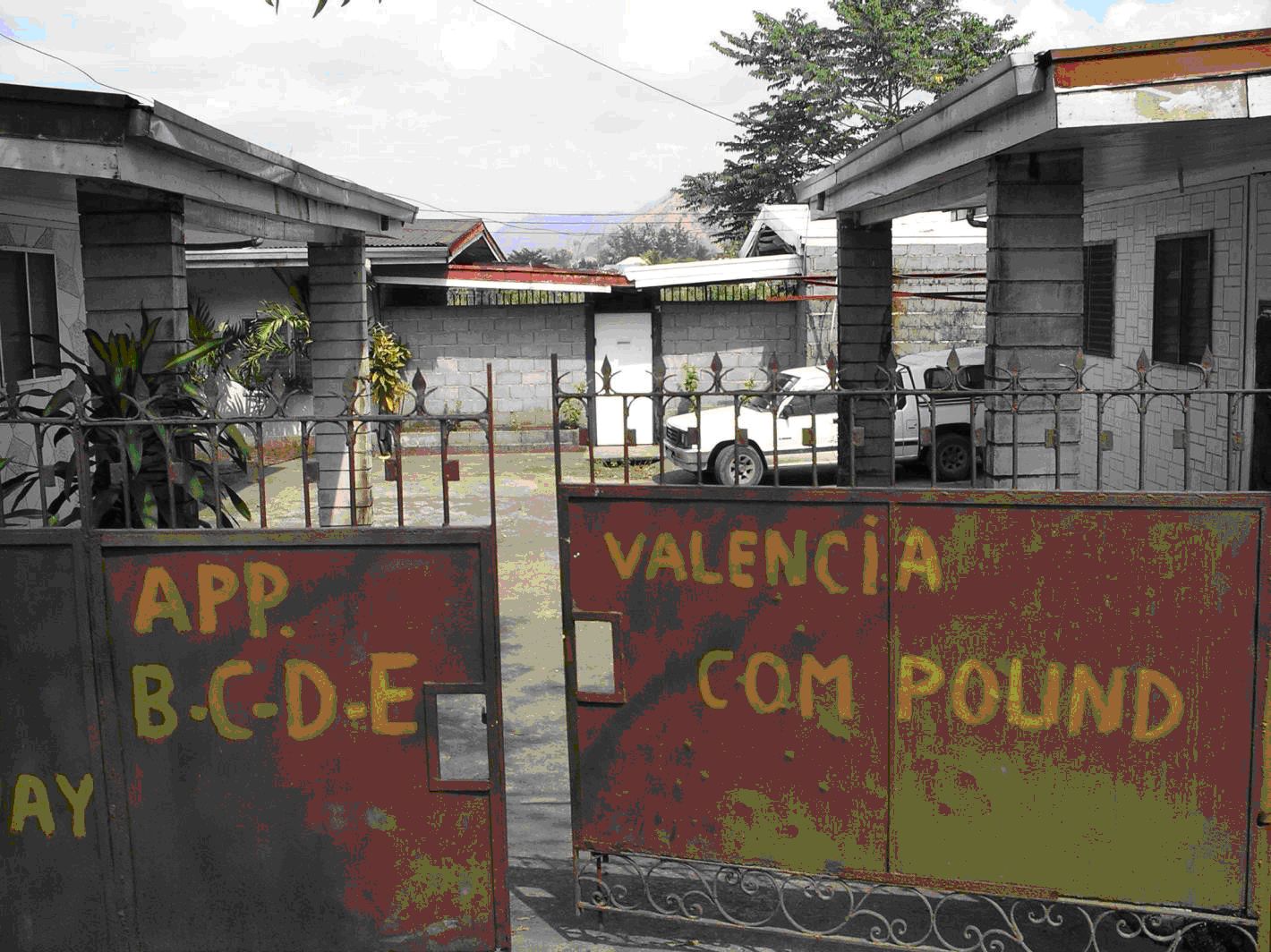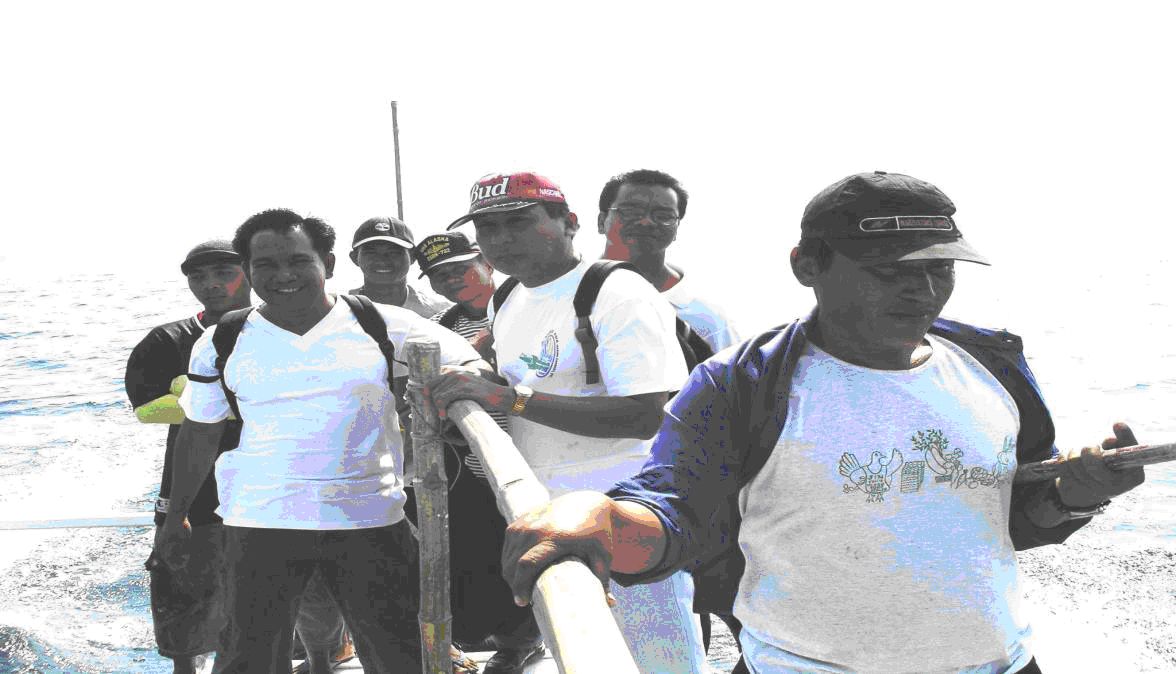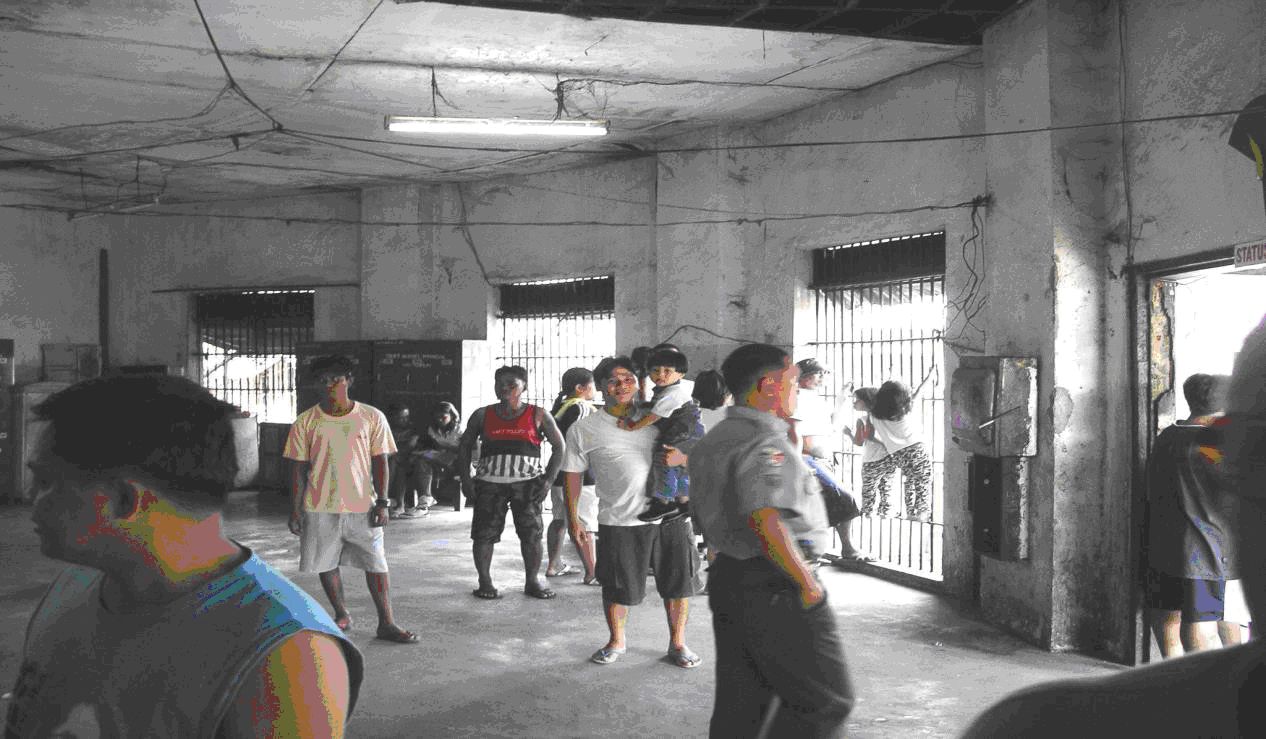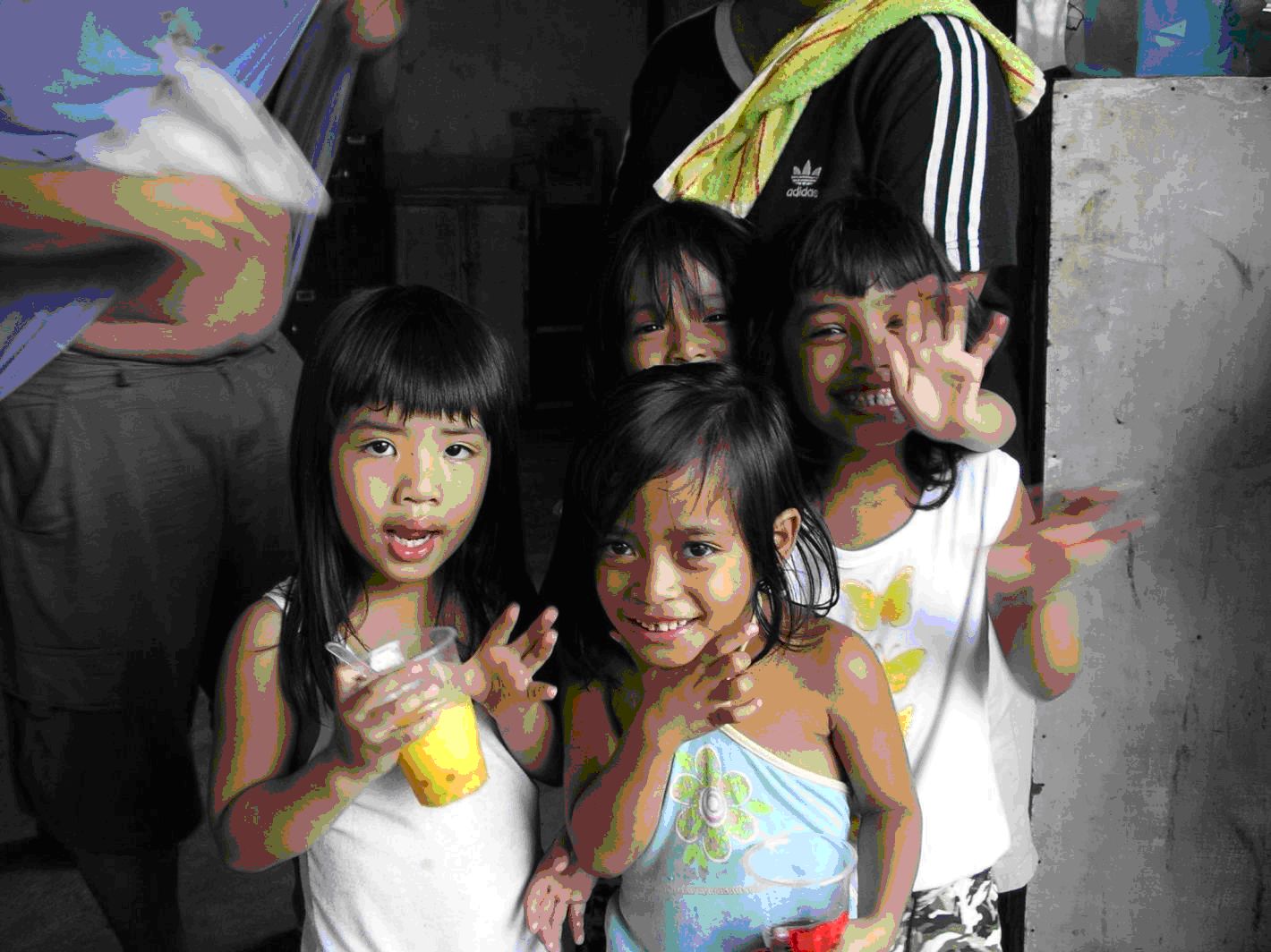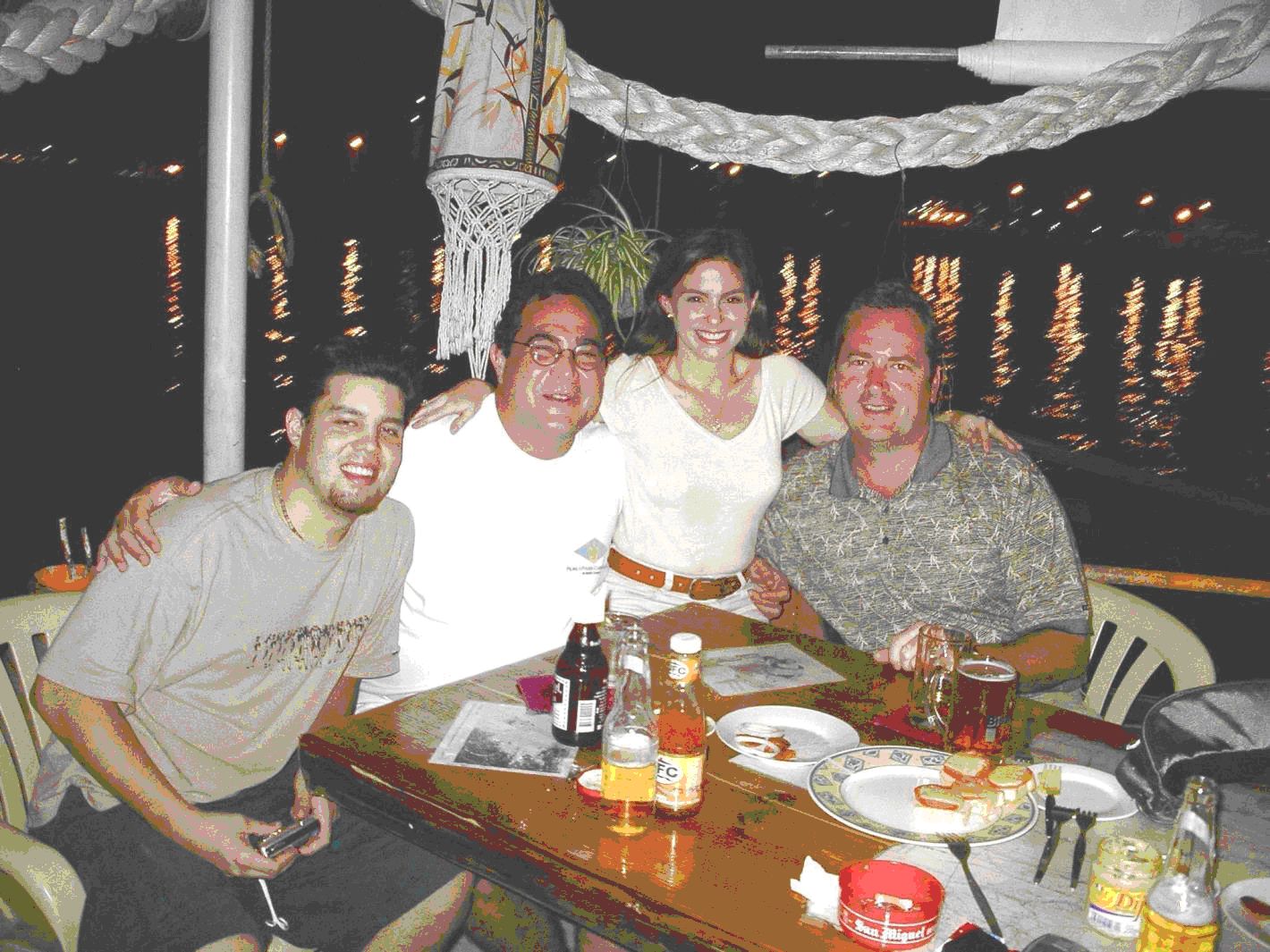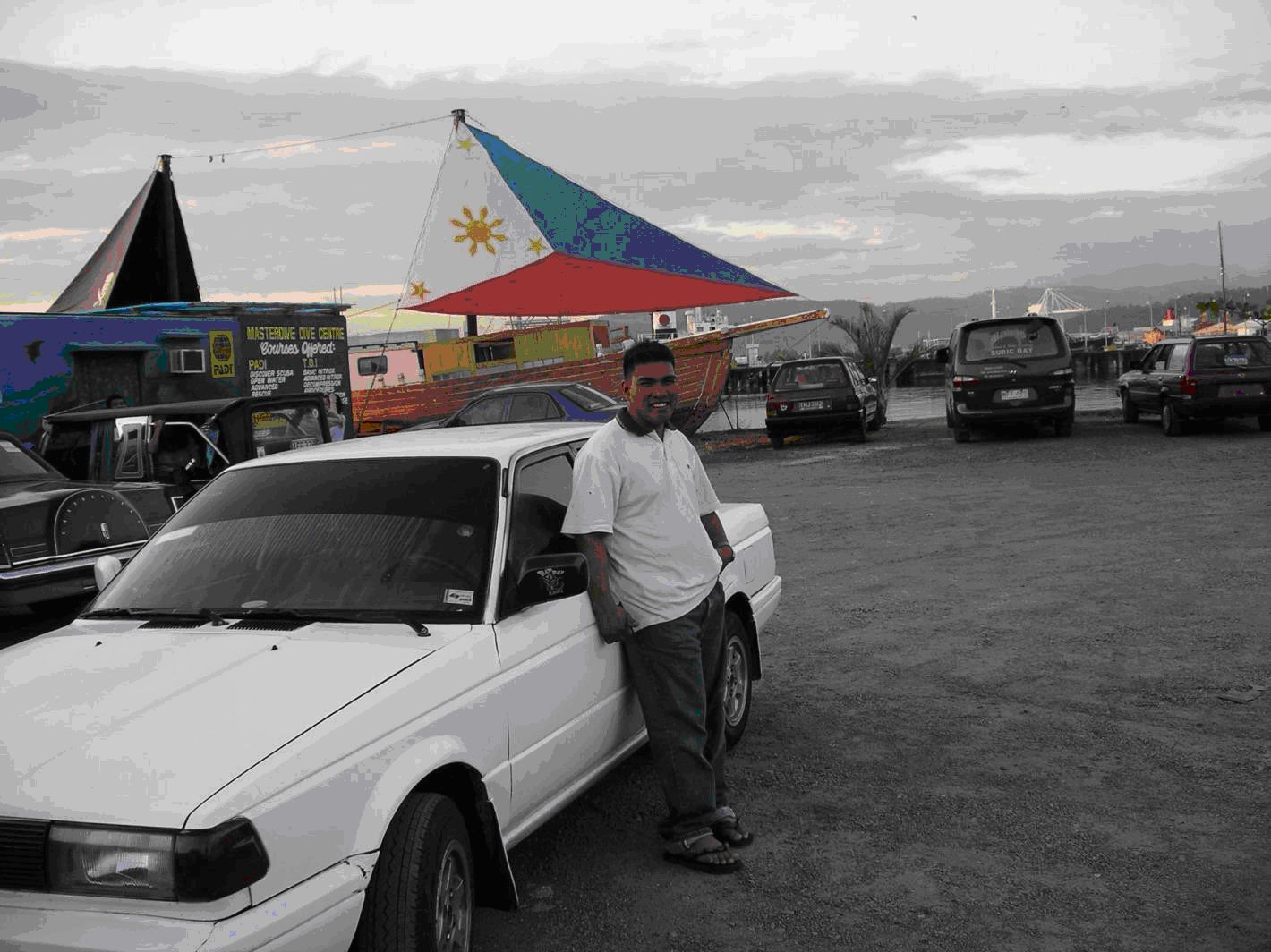In 2004 I was privileged to participate in a tour group visiting the Philippines. The tour included visits to the American Cemetery in Manila, the Manila City Prison (formerly Bilibid Prison which served as a Japanese prison from 1941- 1945), Corregidor, Bataan, Subic, Clark, Angeles City and the site of the Cabanatuan WWII POW camp. The tour was comprised of WWII POW’s – men who had been captured at Corregidor and Bataan, and had participated in the Death March, veterans who had participated in the liberation of the Philippines in 1944-45, family members of men who had perished as prisoners or in battle, and a production crew from the Discovery Channel who were recording the events for an upcoming show.
The events and experiences will last in my memory as long as I live. I recognize now more than ever that I was unworthy to be included in such company, but will honor these men and families, and especially those who made the ultimate sacrifice, by sharing their lives and stories as best I can. The Discovery Channel will far exceed any ability I have to do justice to this experience. The crew taped more than fifty hours of interviews and activities for what will be a forty-minute show. Much editing is underway for a planned April or May broadcast.
Part of the tour included a special groundbreaking ceremony for the Hell Ships Memorial in Subic. The Hell Ships Memorial organization is run by Lt Cdr. Randy Anderson. Randy was part of the US Navy’s Subic closing and transfer to the Philippines in 1992, and is now retired and living with his family in Mindanao. The Hell Ships were the Japanese transports carrying allied POWs to various slave labor assignments throughout the Pacific, including Davao, Philippines, China and Japan. These men were treated to the most inhumane treatment imaginable, stowed like cattle below decks in dark, unventilated, overheated bilges. Many perished from these circumstances alone, and sadly thousands more were lost as the result of allied pilots strafing and bombing these unmarked ships which were included in convoys transporting goods for the Japanese war machine. Many of you remember the Japanese shipwreck frequented by divers just a few hundred meters out from the Alava Wharf. This is one of the Hell Ships, the Oryoku Maru, which was sunk by US pilots unaware of its cargo. Many died here, and hundreds struggled ashore to be interned in miserable conditions for days, until they were re-boarded on the next Hell Ship for China, and once again bombed by allied planes. The full story is best told in “Father Found”, Capt. Duane Heisinger’s tale of his own father’s experience on these ships, and eventual death in Formosa. More on all of this later, but truly amazing history and all the more considering we were never made aware of these events in our own backyard in Subic.
I’d like to share with my friends and fellow GDHS/Subic Bay alums some of the highlights and updates of Subic today. I shot more than 250 digital photos, some of which I’ll include within this text. I spent three days at Subic, leaving the tour group on Corregidor as they headed back to Manila by ferry to catch up with me in Subic later in the trip. I procured a banca and crew from Corregidor to Cabcaben on the southern tip of Bataan, motor tricycle to a bus stop on the San Fernanado Highway, bus north to the Layac junction bus stop (the “T” in the road we always took north to Clark and Manila from Subic and site of a major battle during the defense of Bataan in early 1942), Victory Liner (air conditioned) to Olongapo, Jeepney to the main gate bridge, and then across the Olongapo river to the main gate. I decided that the best way to experience this long anticipated return to the place of so many memories was to have no expectations, no hopes for places and sites that by their destruction or disappearance might sour the experience. A wise choice, for to visit Subic today is to experience what it has become. The memories and sentiments still waft about, and all the more when encouraged by places still intact and almost exactly as when I last visited. But so much is changed, or just plain vanished. There are generally three conditions in the homes, schools and buildings of our past: some are gone completely due to the devastation of Mt. Pinatubo, or to new development; some are remodeled or updated in some way but still resemble their original condition; and some are nearly exactly as I remember, which is pretty amazing considering the decades intervening. There is a sad forth condition, which I’ll describe later and unfortunately applies to GDHS. The pervasive sense that I encountered throughout my visit was the contrast between the vibrant, active populated Subic of my youth, and the quiet, subdued and under-populated Subic today. The infrastructure is still there, but the energy and sense of excitement is absent. I know we always complained that there was “nothin to do”, and that we were somehow missing out on all of the action in the states, but looking back we were always up to something, good or bad There are families living on what is now the Subic Bay Metropolitan Authority (SBMA), but few compared to our days there. I visited two schools currently in operation, which I’ll describe later, and learned much more of the life of a teen in Subic Bay today.
The Main Base
The old base boundaries are still intact, and the gates guarded by armed officers. Access is gained with a resident or worker ID, but I used my passport and later my room key from the Subic International Hotel (formerly BEQ). The traffic in Olongapo is still wild, with signs and rules meant more as suggestions then directives, but within SBMA traffic rules are strictly enforced. Stop means stop, speeders are ticketed, and there are police present everywhere. This gives much of the feel of the old base/Olongapo contrast. Much of the old station area has been redeveloped, and many buildings are replaced or are just gone. The Station Theater on Dewey is the same (the day I first visited they were rehearsing for a gay men’s fashion show that evening, a departure from the events sponsored by Special Services!), but the small exchange/hobby shop/slot car building behind is gone and replaced by a new building housing the Subic museum. SBMA Chairman Felicito Payumo gave us a tour of the museum following the Hell Ships Memorial ceremony.
The Chapel is still there, now an active Catholic church, and the mini-golf course is exactly the same, although somewhat the worse for wear. The O’Club is now a Seafood Restaurant, various clubs and buildings are now restaurants and stores, and there has been a proliferation of Duty Free shops throughout the base. Many of the Station homes are still intact and original, as is the Admiral’s guest house. The greatest improvement is along the waterfront from the O’Club towards the Kalakalan gate. There are a number of beachfront restaurants, with live music, and a new boardwalk and beach meeting area that comes alive at sunset with families, picnicers, vendors and kids and cars. I especially enjoyed trying a new restaurant each night and worked to spend $10 on a multi-course seafood dinner with beverage. At fifty five pesos to the dollar, life is good with American currency in your wallet.
Vendors licensed by the SBMA now work the streets near the waterfront, selling jewelry and coins. January is a slow time for tourism, so apparently I was the only prospective customer, which resulted in a daily gauntlet through the vendors between my hotel and the waterfront.
There are feral cats everywhere – they’re like city pigeons. They live underneath and in buildings and gutters, and come in every color and size. I remember some of these out by the Dependents Beach parking area back in the 70’s, but they have procreated astronomically and infest the base. They’re truly wild, and swarm around restaurants looking for handouts and scraps. What I was most impacted by was hard to identify at first, because it was the absence of the most overwhelming part of the visual and aural memory from the main base area: there are no longer those great carriers and destroyers, tenders and submarines, moored at the piers. The ever-present noise and activity of the greatest navy the world has ever known, part of our lives that we took for granted but that leaves such a hole in the visual landscape. No more Constellation, Coral Sea , Kitty Hawk , and the legions of sailors and SRF workers welding and whistling and clanging. The carriers moored at Cubi, the ships moving in and out of the bay, coming with relieved and excited sailors and marines and pilots ready to rekindle old relationships in Olongapo, or leaving with anxious young men wondering if their adventures at Pauline’s would be the last memories of their youth. That floating city is gone, and if you hadn’t seen and felt it, you wouldn’t understand the sadness of its absence. The athletic field complex is under some construction, and adjacent is a beautiful new sports complex, with covered tennis courts and a very nice indoor basketball complex. The Go-Kart track is exactly the same! I think the same cars are in use that my brother Fred and I raced in return for litter clean-up and chores for the Filipino track manager. I took a spin, and journeyed back to the days when we’d race the sailors, their shirtless bodies burnt badly, yet always smiling and laughing, anesthetized after two dollars worth of San Miguel. They’d bet big, and usually crash before the third lap.
The skeet range is gone, and the lagoon area across from the exchange is now filled and a business park. The Aeta still roam the area, fishing and swimming in the drainage ditches and lagoons. Across from the Go-Kart track and old skeet range is the Yacht Club and hotel, a beautiful development frequented by Manila money. The Exchange and Commissary is now the Royal Subic Mall This duty free mega store has little to offer a state-side visitor, but is packed with locals shopping for US and continental wares and foods. The barbershop and music store wing on the base side is now a collection of shops and restaurants.
I stayed one night but spent many evenings at Vasco’s, a unique bar and B&B just past the refueling dock heading to Cubi, across from the stables road. Owned by an Aussie ex-pat who runs his diving operation from this complex, replete with a unique diving museum, Vasco’s is the favorite hangout of Fed Ex pilots, and has most of the color and adventure to be found on the base. Great food 24 hours, where you can make good friends over dinner and meet again for breakfast after your good nights sleep and their Barrio Barreto tomcatting. Probably the most enjoyable spot to watch the sun set over the Zambales mountains, the fish jumping around and beneath you, the tropical air wafting through the scent of fresh lumpia, and the lights of the runway and departing Fed Ex jets across the bay at Cubi.
Kalayaan
Now known as Kalayaan Heights, the old Kalayaan housing area is much the same. Many of these houses have been purchased by locals, largely from Manila for vacation homes or by SBMA industry executives. For $40,000 you can buy your old house, create a “uniplex” and for $25,000 more own a beautifully remodeled Spanish style villa with colorful stucco and Mediterranean style tile roof. My old home on Harder Street is beautiful, with probably an additional 1200 feet, manicured gardens and patio area, and a reconfigured entry and bay windows. Many homes were remodeled by new owners, but others were not yet purchased and left to the weather and jungle. Roughly one third of the homes are still vacant and available, so if you don’t mind the eighteen-hour commute you can obtain a pretty spectacular vacation home for under $100,000.
The Teen Club is gone – very sad – replaced by a fire station. The Kalayaan pool hasn’t changed at all, excepting the absence of the diving boards, but is in need of paint and cleaning. But nobody uses it – the constant sound of kids splashing, whistles, yelling and screaming, are gone. No more Blue Marlins Swim Team practice, the meets with Clark, American School , Sangley. There are very few kids living in the area, and many of the homes are only occupied seasonally.
The Kalayaan Theater is gone – vanished- the stairs from the pool leading to nothing. Others with more recent residency may know more, but I’m guessing that the old wood frame theater was a victim of Pinatubo.
The Kalayaan O’Club is now Casa Kalayaan Learning Center , a newly created private school providing top notch teaching and learning for both primary and secondary students. Run by Eduardo and Joanne Prieto, a wonderful, energetic couple with two young girls, Casa Kalayaan occupies the O’Club building, which is now classrooms, cafeteria, dance and exercise studio, etc. I came to know the Prieto’s quite well, and was invited to speak to the students about both the Hellships history, as well as my past and how Subic has changed. I showed them where they could find the Japanese bunker just behind the O’Club and theater. They were surprised to learn that the playground just completed behind their new school was once a theater, and how alive and populated with kids their own age Kalayaan and Subic once were.
The Flag HQ, the Admiral’s home in Kalayaan, is now occupied by SBMA Chairman Payumo. The SOQ is much the same, with the addition of the new housing area just below which was only begun as I left in the early 1970’s. Kalayaan Elementary is now SPED, or special education for gifted students from the area. Of all of the schools, Kalayaan is probably the most preserved in its original form, from buildings to grounds. I spent much of one day walking the streets of Kalayaan, from Harder up Argonaut to Finback and Bonita, up Finback to Corsair, and over to East Kalayaan. So many memories – from the families in each home, where I hung out after school, the bus stops for school and station buses, the late night goings on in the park at the Finback-Argonaut intersection, kids, yardboys and maids everywhere, hot sultry days and monsoon downpours, fruit bats and coconut beetles, starting out the night at the theater and ending at the teen club, parents all off golfing or socializing, leaving Kalayaan to the kids and teens for entire weekends. It’s all very much the same, but like a skeleton without life – an image of the past that you can’t quite see without the people and life that made this place explode with life and energy.
George Dewey High School
I’d prefer to skip this, but you need to know the truth. Of all the images and places that we’d most like to revisit, sadly GDHS is the most abused and abandoned. GDHS was converted into a conference center ten years ago, and a restaurant, The Hollywood Steakhouse, added. Both failed, and the school complex is trashed and nearly abandoned. There is a small business that does engine repairs, and some signs on locked doors indicating business activity of some sort, but the facility has been vandalized. I found many doors of old classrooms open, the walls and ceilings trashed, men sleeping on floors, or just sitting around. Kind of creepy, but mostly sad and decaying. If you are dreaming of a return to Subic, with the primary purpose of walking down memory lane through the breezeways of GDHS, don’t waste the time or money, and open your yearbook instead. The day I was visiting, a development company was preparing for a groundbreaking ceremony on the site of the ball fields. The entire valley – from the Tipo Highway (the new cutoff road past the Zig Zag that runs across the old little league fields and over the mountain behind GDHS) to the school – will soon be a condominium complex. Admiral Spring Park has been abandoned, and partially replaced by the Tipo Highway, and only the “Rocket” remains – for now. Sorry, but your memories, and the people and events, are what really matters. It could be worse – after base closure, Clark was swarmed by looters and is hardly recognizable.
Binictican
Probably the most preserved area, the houses don’t look like a day has passed. The theater is gone, and the pool is vacant and under repair. Binictican Elementary is now Brent International, a private church-run school serving children of Fed Ex pilots, industry employees, and wealthy locals. Excepting a few new additional buildings, it hasn’t changed at all. I entered all of my old classes, thanks to a very hospitable principal and teachers, and the blackboards, storage closets, etc. are original. Some great memories here – Boy Scout meetings in the gym, and staring out the window at the pool wishing I was there instead of doing fractions.
The new housing and road back to the stables weren’t there in 1970, but is probably identical for those who have lived there in the last twenty years. Most of the Fed Ex families live in Binictican, where most homes are rented, and occupied.
The golf course is now the Subic Country Club, and the old club house has been replaced by a spectacular new facility. Membership was relatively cheap, and another reason to make the eighteen hour commute to your new vacation home. The course has been redesigned – the old tow-rope mountain climb has been updated – but the hole along the road up to Binictican is still the same, and makes the trip seem so familiar.
The Stables – El Kabayo – are much nicer than I remember, with very nice arenas and stable areas.
Cubi
Still monkeys everywhere, with the same attitude – give me food, but if you get too close you’ll see fangs. The hospital is still a medical complex. I spent some time at JEST, which is completely remodeled and updated, but much to the better. I attended a JEST presentation by an elderly Aeta, who was retiring in August but had trained US pilots and was there when I last visited decades ago. He showed us how to use bamboo to cook, eat, find water, make soap, and start a fire – the familiar presentation repeated since before I ever arrived nearly forty years ago. I asked him if the old Boy Scout camp was still intact, which many at JEST had helped us build in 1969 and 1970, but it’s now abandoned and has been reclaimed by the jungle.
Dependents “All Hands” Beach was packed on the Saturday I visited, and it was great to see so many enjoying that special place. It didn’t seem the same, without the roar of jet engines and fighters working the runway, but in some ways has hardly changed. The floating dock is gone, but many new cabanas, and cottages for lease, have been added
Olongapo
Walking out the main gate and across the bridge, Olongapo of our past is gone. The clubs and activity that once sang the sirens song to Sailors and Marines have been replaced with quiet shops and restaurants, and all of the action and activity is near the market. Jeepneys still rule the street, but are now color coded to indicate their respective routes – yellow for Santa Rita, blue for Kalakalan, etc. Still cheap – five pesos, or ten cents, for a trip from downtown to the gate. Shopping in the old market, and in the shops, is still about bartering. Olongapo is comparatively clean and economically upscale, especially in contrast with Manila. I stayed in Makati in Manila, but felt safer and more comfortable in Olongapo.
There are no longer beggars in the Olongapo River, but it is still an open sewer. Things are still filthy and polluted, but not just in Olongapo. If there was one thing that I’d selfishly like to see, it would be a change in attitude toward littering and general pollution. The rivers, and not just in the cities, are thick with waste, and Manila Bay is a floating garbage dump. I know that there are greater priorities when just finding enough to eat is an overwhelming daily task for many, but some of the sense of personal and national pride is diminished when those who have the luxury of choosing instead refuse to remove and dispose of the filth in which they live.
Barreto – Baloy – Matain
Since I had lived for a time out past Barrio Barreto, in Barrio Matain across from Baloy Beach, I made the trip past the cemetery and Half Moon Bay to my old housing compound. What a change. Much new development, the dusty old road with dirt ditches is now a wide, paved highway to San Miguel. My old house and compound are uninhabitable by my father’s standards, and quiet Baloy Beach and the cane field we would walk through between our house and the palm-lined beach have been developed Baloy Beach, once a lonely stretch of sand with a few bancas for rent and a half dozen beach huts available for day use, is now a paved street with homes, stores, and a large hotel complex
Barrio Barreto is a thriving community. And like every rural community, barrio or city, is overrun with motor tricycles. I didn’t see any of the old Blaylock Taxis, but the Winstar Taxis are abundant, along with Jeepneys and Victory Liners.
The People
I met so many locals in Subic and Olongapo who were a part of the US Navy Subic days, and longed for a return to things pre-1992. The economy is struggling by comparison, and the cost of maintaining the old Base, and its vast infrastructure, is beyond the reach of the revenue sources from current industry. Fed Ex is threatening to relocate their Asian base to China, maybe a bargaining ploy, but still unsettling. There is a different sense of relationship between the Filipinos and we visiting Americans. There is still much hospitality and good will, but probably a more healthy mutual respect not dependent on a client relationship.
The general sense of happiness – the abundant smiles and spontaneous friendship – wasn’t there in the way I remembered. This may be because my frame of reference has weathered thirty years, and I’m now not the happy go lucky boy and young teen that saw the best in all. I probably witnessed the greatest expression of happiness and continuous smiles and laughs in Bilibid prison in Manila…
Recommendations
I’d go again, and probably will next year. If you have the need to see, smell (and the smells are the same, and elicit such memories) and taste the Philippines , then go. But put your expectations in perspective, and enjoy what is without judging against what was. Your High School is nearly gone, and probably will be soon. But for the same reasons that your life was enriched and changed by a youth spent there, you should return to enjoy not just what was, but what can be added to your experiences and memories. The food and weather are great, the beaches soft and inviting, and the people earnest and optimistic For the cost of a family weekend in Disneyland you could spend a month enjoying the best this beautiful country has to offer. So go.
Gratitude
I want to thank so many for their hospitality, beginning with Ed Henry and Military Historical Tours for letting me participate in this once in a lifetime event. Kevin Hamdorf , a Subic based photographer with world-class credentials, not only spent much time with me on the tour, but was willing to join me in our visit into the heart of Bilibid Prison. His recommendations and advice when in Subic were also quite helpful, and the insight of his teenaged daughter, Kristina, was especially revealing.
Eduardo and Joanne Prieto , the visionaries behind Casa Kalayaan, helped me realize that the real treasure found in this visit was the people who make Subic such a wonderful and promising place today. If all of the Philippines shared the optimism and energy of the Prieto’s, economic growth and political stability would surely flourish.
Special thanks to my new friend, faithful husband and hardworking father Troy Carmiento who drove and guided me, and patiently waited while I yammered on about the past and what this or that building once was (and he helped me remember how to count to ten and how to tell the vendors to get lost in tagalog!). And above and beyond the call of duty, Troy drove me from Subic back to Manila – during rush hour, accommodating my desire to leave by the back gate through Kalayaan and over the Zig Zag rather than the new Tipo short cut. A good man.
Lastly, my thanks and admiration to Randy Anderson , a faithful servant to his country, and a man committed to the preservation of the memory of the Hell Ships and their human cargo. I plan on contacting each of you to solicit your support for the Hell Ships Memorial that Randy is working so hard to create in Subic. We may not have known of this terrifying chapter in the history of Subic, but we owe it to the legacy of those who served and suffered to not let them be forgotten. For more more on the Oryoku Maru and the Subic sinking by fighters from the USS Hornet, the fate of the men on board, etc. http://en.wikipedia.org/wiki/




























